
September 26, 1980 – in Munich a bomb deposited in a trashcan at the entrance to the Oktoberfest kills 13 people and injures 219, many of whom lose limbs in the explosion. The bomb detonates at 10:20 p.m., just as thousands of visitors are crowding toward the exit. It is beyond dispute that Gundolf Köhler, a university student from the Swabian town of Donaueschingen, made the bomb, took it to Munich and deposited it at the scene of the crime. He is killed, because the bomb goes off too soon.
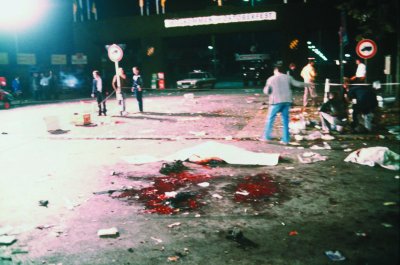
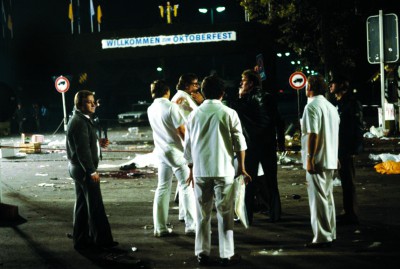
But even 30 years later his motives will remain unclear. Was he a crazy perpetrator who was acting alone, or did an extremist right-wing group stage a terrorist attack against Germany just nine days before parliamentary elections? The student had ties to Wehrsportgruppe Hoffmann, a neo-Nazi organization banned on January 30, 1980. Köhler had taken part in their exercises. Is it really a coincidence that Frank Lauterjung is at the scene of the crime? The key witness to the attack is also a right-wing extremist and he might have been also an informant for Germany’s domestic intelligence agency. Lauterjung survives the explosion, even though only a few meters away, because he has a “bad feeling” and throws himself to the ground before the bomb detonates. Investigators questioned Lauterjung at least five times. He will die of heart failure in 1982, when only 38. Lauterjung tells investigators that he noticed Köhler in a loud discussion with two men in green parkas near the site of the crime, about 30 minutes before the explosion. The two men were not among the victims. What the investigators overlook is that Lauterjung is an avowed right-wing extremist. Previously unknown letters, discovered as part of a deceased person’s estate, will reveal that in the mid-1960s Lauterjung was in the Bund Heimattreuer Jugend (BHJ), where he served as ‘deputy national leader’ and ‘regional commander.’ Members write ‘Heil Dir!’ as reference to the ‘Heil Hitler.’ A BHJ leader suspected that Lauterjung had infiltrated the organization, and that he was possibly working for Germany’s intelligence. He would sometimes “disappear for four weeks at a time, as if he had been wiped off the face of the earth.”
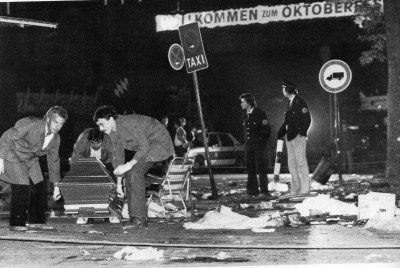
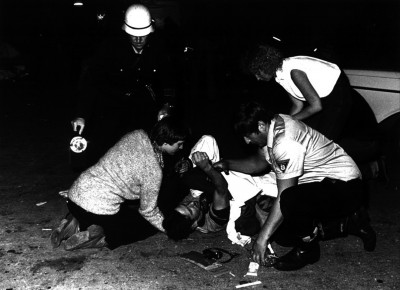
Shortly after he was kicked out of the BHJ, Lauterjung joined the Socialist German Student Union (SDS). Was he following Köhler? Lauterjung claims that, as a gay man, he was looking for sex at a public toilet at the entrance to the Oktoberfest. Lauterjung also says that he believed Köhler was doing the same thing. According to Lauterjung, Köhler was carrying a heavy, cylindrical object in a white plastic bag and a small suitcase. The suitcase disappears without a trace, even though other witnesses say that they have seen it immediately after the bombing. A female passerby says, two young men were standing next to Köhler’s body, shouting: “I didn’t want it! It’s not my fault! Just kill me!” Another woman says that she saw a car with five passengers near the entrance to the Oktoberfest a week ago, just after it was opened. There was a large object wrapped in black material on the back seat. The woman even remembered the license plate: VS-DD 500, a Ford owned by Köhler’s father.
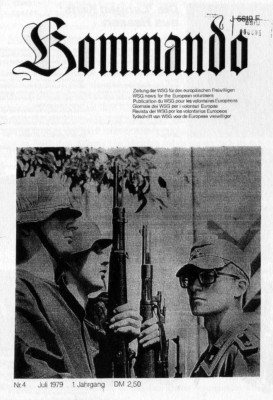

Not even a trace of the detonating device is found among the pieces at the site. The investigators assume that a faulty fuse had caused the early detonation.
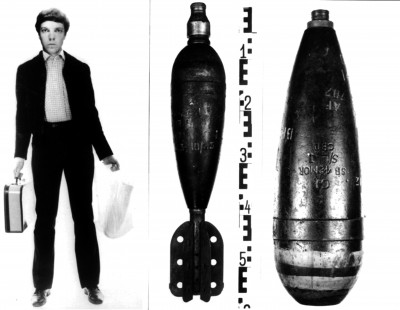
In a 1984 novel, Wehrsportgruppe founder Karl-Heinz Hoffmann will write that the Oktoberfest bomb was detonated by remote control. Are the backers even from Italy? A few weeks before the Oktoberfest bombing, right-wing extremists killed 85 people in Bologna train station. Munich papers receive calls claiming responsibility from “right-wingers in Bologna.”
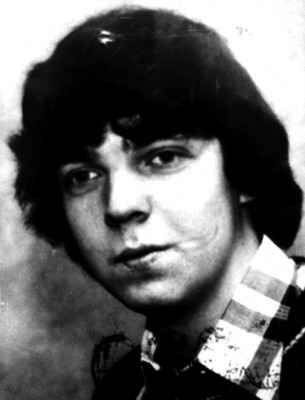
So this is the setting. The Oktoberfest at night, the exit with the arching sign overhead, a mass of people. The question is: What to do with it, artistically, politically, intellectually. The politicians decided very quickly what to do: They buried the case. They suggested leftist terrorists behind the plot for a short while and then, as right-wing connections became more evident, they shut the case claiming that it was the lone Köhler who commited this atrocity. It would have been too much to bear to have a right-wing conspiracy, escpecially in Bavaria, where things are always better than in the rest of the republic. But the fact remains, the dead remain, they even, as dead often do, resurface. There are new investigations into this crime, there is evidence of a cover-up, there are piles of testimonials that have never been read, there are, and this is what stayed with me most, 47 cigarettes that were found in the car of Köhler, from six different brands, with and without filters. It seems not very likely that Köhler smoked them all himself, six different brands, with and without filters. It points to the fact that he might very likely not have acted alone. And today it would be easy to look for DNA on the cigarettes that would help identify anybody in the car with Köhler. 47 cigarettes. What to do with them? Artistically, it might be a good idea to smoke them with the audience at Lothringerstraße 13, the art space where we are invited to to a presentation on the subject on October 6. Politically or at least police-wise, the answer was: Destroy them. They had been stored to a while together with other evidence, among other things a hand that had been torn off at the blast and was never claimed by any victim and could also not be identified to any victim. All was discarded a few years back. So no evidence in this direction. But like with all catastrophes, the imagination is larger than any evidence. The interesting thing is: I am not sure how present the Attentat is still in Munich memory, in the memory of the place, in the body of the city so to speak.
Christopher and I did this research concerning the years 1980 and 1981 as important years of a shift overlooked by most historians, tendencies that were still in the stage of latency or out in the open but overlooked: end of Communism, end of Capitalism, haha, well, sort of, more like the beginning of radical Capitalism, the rise of radical Islam. And there were other, smaller stories. Like Bologna, where everybody thought the bomb had been planted by left-wing terrorists and where the police and the politicians acted accordingly. A lie maybe more than a truth generates something that in turn becomes undeniably a fact, a truth so to speak. The assassination attempt on Pope John Paul II was such a case where the myth of him being saved by the virgin Mary became so strong that it made him change his policy towards the Soviet Union. Christopher and I restaged and reenacted this event many times, in Zurich, Hamburg, New Delhi among other places. It was always something not quite cathartic, something fun and relieving and at the same time a bit humbling, serious. Like world history turned into a birthday party for an eight-year-old. This is what we want to do with the Oktoberfest Attentat. Sometimes there seems to be an act of exorcism in our work. Not in this case though. It is more about waking up the ghosts.
On the one hand, the events of September 1980 are well documented. There was a TV feature just yesterday, it was thorough and critical and asked the right questions. What can art do in this context? What is the story we want to tell? What are the connections we want to make? There is, of course, the very nature of fact, the documentation via photos, via witnesses which might or might not generate a true feeling or an insight into what has happened. Was this what the TV feature did? There is the little horror of authenticity that Franz Josef Strauß always elicits. There is the Wehrsportgruppe Hoffmann. But is there also a different truth? What can we do about this event? One thing I asked myself is: Should we build this modell of the site, of the event? Should we blow it up? And: What does reenactment mean in this context? We did the Pope assassination attempt, this was quite different. What happens if we reenact this event where so many people died? Or does it fit even more into the violent story of these years, the very essence maybe of these years, where assassinations all over the world shocked and up-rooted whole societies, maybe most of all in San Salvador with the bloody civil-war. But also Bologna etc. What is the context of what we see in Munich? Is it only the FJS nostalgia? We will cater to that, we will have the fine silk scarf that Florian Böhm printed. It shows Strauß hunting in Pakistan. What is the connection here? The problem with news is that they show you what you see. They don*t show you what you do not see. This might seem obvious, but it is in fact a ver profound problem with tremendous political consequences. News should be about showing you the things you do not see. This again is a simple technical problem: You cannot see what you cannot see. So how will we resolve this problem? Is it even a problem?
My first thoughts on bombs and bombers as ‘loners’ go straight to Karin Grech. She died when a letter was delivered by a fingerless carpenter to her doorstep some days after boxing day in ’77.

Why? I don’t know. How relevant this is to this conversation? I also don’t know. But it makes me question the relevence or contribution a reenactment of the oktoberfest attentat could have. I ask simply what? why? and how?
We start with a model of the situation. What is it made of? What does it say? Will the meaning change with scale? Generally speaking, it is easy to fetishize a situation when it is represented in a tiny scale, (think dolls houses and train sets?). It is also however, hard to fall in love with such a bloody event. What do we do with the 47 cigarettes? Do we shed light on other details linked to the scene but conveniently forgotten?
Working with models is usually simple and straightforward if you know your tools, your material, your glue. Here the game changes. The whole point should be the change. From the whole to the fragmented parts – parts which represent an exploded place/victims/story/past… What do we represent? How specific will it be? Maybe it is enough to start, explode, record and repeat. Maybe it’s good enough. For now…
Here, in Venice there is no sign of the oktoberfest attentat in 1980 events that shaped architectural discourse. How strange. Maybe it was outnumbered by the Bologna blast. Maybe because simply 85 is bigger than 13. Maybe size does matter in the end.
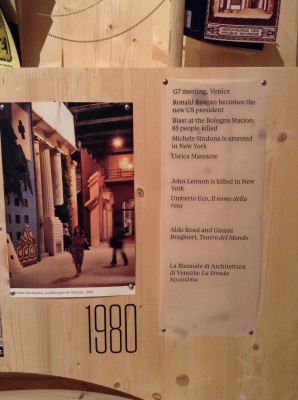
radical pedagogies by beatriz colomina (venice biennale ’14)
That is an excellent point. Why is Bologna such a memorable event, a strong mark in the history of post-war Italy and a turning point in the political self-understanding of the country – and the Oktoberfestattentat is something like folkloristic, something weird and Bavarian, no context, no narrative that puts the event into a perspective. It was quickly diminished in size and relevance. How could this happen? Everything was there to produce a scandal of sorts. Pictures, dead, a more than popular site. It was a bit like tearing out the heart of Munich. But things were settled fast. This was a political decision by the Strauß government. But why did it work? How did the early-eighties iconographic memory work or not work? As Alexine says, maybe size does matter, for a model, for the dead. 85 versus 13. 85 versus 13. 85 versus 13. Or is there just no narrative for right-wing terror? Just like there is no narrative for right-wing thinking. This is, by the way, what made the other deadly series of right-wing murders possible, the terror trio of the NSU. You need a story to find what you are looking for. This is a paradox. This is politics. How could it happen?
So after Alexine and I have met, the following suggestion/thought – there is a common link in a lot of narratives about bombs and assassinations, the “loner”. We seem to want this narrative, we seem to need it. It makes more sense that somebody might kill alone, it is more comforting. There is, of course, a motive for that; and in the case of the Oktoberfestattentat, it totally worked. The event is more or less erased from memory. 13 deaths. It could have been a major crisis. But nothing. First they blame it on the Left, like the Italians did it in Bologna. Then they blame it on a “verwirrter junger Mann”, a sort of delusional young man, the eternal outsider. This drains all the politics out of these actions. This leaves us with carnage. So best fast forget it, fast forward. Bologna is still remembered. Munich is not. Alexine remembers the assassination of Karin Grech. What is the size of memory? What is the shape of death? How can we even grasp what has happened? What is the color of catastrophe? So maybe we do it like this: Three stories in one room, Karin Grech, Gundolf Köhler, Gladio and its role in the Bologna blast. Three languages. Three sites of death. The years 1980 and 1981 were bloody years. There were a lot of dead, a lot of people shot, Reagan, Lennon, there were demonstrators shot in the streets of San Salvador. What do you do with these images, with these stories? How can you access them, store them? We reenacted some of these in yoga positions for the opera we did in Munich. This time we try something else. How can we change the size and shape of memory?
We spoke about walking around/inside the stories. We discussed presence and again scale. We agreed, size matters but is somehow relative. It depends on memory, on understanding, so also on language, politics and translation. So maybe size is personal and the stories’ presence should reflect that and possibly play with it too, mix things up. Logically 85 > 13 > 1 but maybe 1 > 85 < 13.
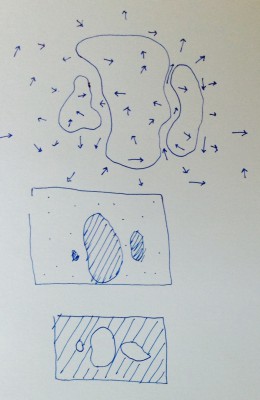
Phrases could (literally) outline each story, that would outline a memory hence an event. Our lines will be like traces(of each story) in memory, somewhat vague but still very present. We outline this void.
Almost similar to how a chalk outline (temporarily) marks evidence at a crime scene to preserve evidence. Surely ‘happier’ outlines exist. Like Keith Haring’s murals of technicolor, traces of forever dancing silhouettes.
 tuttomondon; keith haring 1989 mural in Pisa
tuttomondon; keith haring 1989 mural in Pisa
We spoke about forgotten details, again the cigarettes, the fingers (or lack of), those triggers …surely there are more.
We could walk around/inside it. We could listen to the story in a language we might not comprehend but simultaneously read about it in BIG BOLD PRINT or in tiny tiny type somewhere else. We connect the shape with the sound and we mix things up but we remember. Also, what do we take away? What does this leave us with? Possibly new traces?
Still, what is the colour? What is outside? What draws the line? Is there a pattern?
This is how it could start. This is how it could be.
I think we should overload with images. Make a wall like the walls in Homeland or The Wire. Pin images together as if we look for traces. But these images are all screwed up. They might make sense, but in a different way. Like the blog that Christopher did totally makes sense in a different Godardian way. Take a look: http://www.8081.biz/ There is such a nice element of the unknown in all of this which. We could recreate this misunderstanding.
Jean Baudrillard:
a) In this system, death itself shines by virtue of its absence. (The Bologna train station, the Oktoberfest in Munich: the dead are annulled by indifference, that is where terrorism is the involuntary accomplice of the whole system, not politically, but in the accelerated form of indifference that it contributes to imposing.) Death no longer has a stage, neither phantasmatic nor political, on which to represent itself, to play itself out, either a ceremonial or a violent one. And this is the victory of the other nihilism, of the other terrorism, that of the system.
There is no longer a stage, not even the minimal illusion that makes events capable of adopting the force of reality — no more stage either of mental or political solidarity: what do Chile, Biafra, the boat people, Bologna, or Poland matter? All of that comes to be annihilated on the television screen. We are in the era of events without consequences (and of theories without consequences).
On Nihilism, 1980
Jean-Louis Bruguière:
80*81: You also found a connection to the attack in 1980, on the Oktoberfest in Munich?
Jean-Louis Bruguière: We were sure that the terrorists of the Rue des Rosiers had contacts with the extreme right and the Nazi groups. The DGSE, the Diréction Générale de la Sécurité Extérieure, the French external intelligence agency, passed me the information that two of the attackers had striking similarity to two German neo-Nazis, Walter Kexel and Odfried Hepp. Hepp was trained by Fatah in a camp in Lebanon, from June 1980 until July 1981. Their antisemitism and antizionism went well with the Palestinian movement. He called himself ‘Youssouf’ and tried to set up a PLO cell in Frankfurt. He is a strong suspect for the bombing in Munich that killed 13 people.
80*81:
Jean-Louis Bruguière was the most important “juge d‘instruction”, as these clandestine researchers are called in France. He became a judge in 1973. He was dealing with local criminal affairs in Normandy. He moved to Paris in 1976, still in charge of small affairs. He transferred to organized crime in 1978 and in 1981 his career exploded. In 1986 he formed an anti-terrorism division in Paris. A year later his apartment was targeted in a grenade attack; Bruguière continued his fight. In 1994, he captured Carlos the Jackal, one of world’s most wanted terrorists. Possibly his biggest case was that of UTA Flight 772 which was sabotaged over the Sahara Desert in 1989 with the loss of 170 lives. Bruguière had six Libyans prosecuted in Paris and convicted in absentia. In 2004, at the height of his career, Bruguière was appointed vice-president of the Paris Court of Serious Claims. He was responsible for the indictment of Rwandan president Paul Kagame for the assassination of Juvenal Habyarimana in 1994. In 2007, Bruguière left his civil function as a magistrate and became a candidate for Nicolas Sarkozy’s UMP conservative party. He was defeated by his Socialist competitor.
I like the drawings on the floor.
More than a model-model. I think we should create a situation. Columns of wisdom/whispering could work.
Answers more than questions. The answers though don’t have to be true.
What do we repeat today?
Is it the NSU? Many same coordinates (involvement of services/ non-interest of police) suicides and deaths of important witnesses.
As Don DeLillo pointed out in MAO II and what the German Baader Meinhoff Group did so well is producing images. Images of destruction in the news which recall atrocities (like those in Vietnam) but re-enacted in front of our own door.
These were not the images right wing groups would want to create. Anyway the right wing affiliations of the Oktoberfest offender(s) suggests that the attack was carried out within the scope of the ‘strategy of tension’ (in which terrorist attacks by far-right militant organizations were staged by internal state operatives to convince the populace to accept more authoritarian exercises of government power.
Blame the left.
Such strategies have been identified with the top secret NATO stay-behind operation Gladio. Bologna train station a few weeks before the Munich bombing. Right-wing extremists killing 85 people. Munich papers receive calls claiming responsibility from ‘right wingers in Bologna.’ Tobias von Heymann found reports in the archives of East German intelligence, STASI, which make a connection between Gladio, NATO Stay Behind agents, and the Oktoberfest bombing.
Why does nobody talk about Gladio’ involvment now?
The new witness talked about men following her in cars.
The Oktoberfest in Munich is a hedonist and decadent beer festival just to get drunk, to get laid, to party in traditional costumes. All these foreigners having so much fun. Imagine the loser Köhler going around and hating all this. Like an Islamist.
Besides the analyses going on about ISIS that they only recruit Losers I think there is also this romantic idea of being a terrorist, give meaning to your life, fighting for the right thing. But as Zizek pointed out ISIS only fight their own temptation. What did/do the right wingers fight? For the Vaterland, against Communism, the Left. Or their temptations.
The Bologna Massacre
In Bologna, a terrorist attack at the central train station kills 85 and wounds 200. The event will become known as the Bologna Massacre. At 10:25 AM, with the train station filled with tourists, a time bomb— constructed from TNT, T4 and compound B—detonates in a suitcase placed inside a waiting room. The explosion destroys most of the main building and reaches the Ancona–Chiasso train waiting on the first platform. The roof of the waiting room collapses onto the passengers, increasing the total number of casualties. The city is unprepared for such a catastrophe. Ambulances are overwhelmed by the number of victims, and buses and taxis are enlisted to transport the injured to hospitals.
Blame for the attacks is placed on the neo-fascist terrorist organization Nuclei Armati Rivoluzionari. General Pietro Musumeci, second in command of the military intelligence agency SISMI and—as will be revealed in 1981—a member of the P2 Masonic lodge, will forge evidence in order to charge two leaders of Terza Posizione in exile with the crime. The exiles accuse Musumeci of trying to divert attention from Propaganda Due and Licio Gelli, head of P2. In 1988, four neo-fascists will receive life terms: Valerio Fioravanti, his wife Francesca Mambro, Massimiliano Fachini, and Sergio Picciafuoco. Leader of P2, Licio Gelli, Francesco Pazienza, Pietro Musumeci, and Giuseppe Belmonte, receive sentences for slandering the investigation.
In 1990, an appeals court cancels the convictions of the four neo-fascists, as well as those of Gelli and Pazienza. A retrial is held in 1995 and the Corte di Cassazione issues the final sentence, upholding the life sentences for the neo-fascists and members of the Nuclei Armati Rivoluzionari, and convicting Gelli, Pazienza, and the SISMI officers of investigation diversion. In 2004, Luigi Ciavardini, who was 17 years old at the time, receives a 30–year prison sentence for his role in the attack and the subsequent assassination of Judge Mario Amato in June 1980. In 2006, the lawyer of Argentine AAA (Alianza Anticomunista Argentina) member Rodolfo Almirón declares that it is ‘probable that Almirón participated—along with Stefano Delle Chiaie and Augusto Cauchi—in the 1980 bombing in Bologna’s train station.’ However, the Argentine Supreme Court refuses, in 1998, to extradite Cauchi to Italy. In 2008, former Prime Minister Francesco Cossiga alleges that PLO-affiliated terrorists from George Habash’s Popular Front for the Liberation of Palestine were responsible for the bombing. PFLP denies responsibility.
In view of the SISMI and P2 involvement, as well as the right wing affiliations of the offenders, it is believed that the attack was carried out within the scope of the ‘strategy of tension’ in which terrorist attacks by far-right militant organizations were staged by internal state operatives to convince the populace to accept more authoritarian exercises of government power.
Such strategies have been identified with the top secret NATO stay-behind operation Gladio.
In Italy, the August 2, will be designated as a memorial day for all terrorist massacres. The station will be reconstructed, but the flooring and a deep crack in the main wall will remain untouched. Moreover, the station clock will be forever stopped at 10:25, the exact time of the explosion.

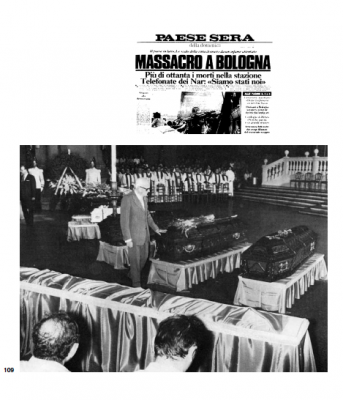
Another Right Wing Bombing
April 30, 1981, the Riocentro bombing ends up killing sergeant Pereira do Rosário and hurting captain Machado both from Brazil’s armed forces’ intelligence unit. The bomb went off early in the parking of the Riocentro convention center. It was destined to go off with other bombs during a concert with Caetano Veloso and Gilberto Gil when 20,000 people celebrated May Day. The incident, never fully investigated, occurred at a turning point in Brazil, after the huge metal workers’ strikes at the end of the 1970s, (later-president) Lula founding the PT and soon after going to prison. During General-President Figueiredo’s (‘the last dictator’) mandate, from 1979 to 1985, Brazil goes into a deep recession and he will be remembered as the worst leader the country ever had. Leaving power he says: “I want people to forget me.”
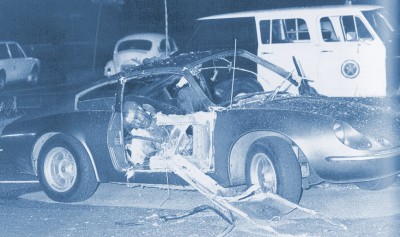
I tried to buy a hand (blutige Hand) today. At Maskworld. All sold out because of Halloween.


Metamodernism:
„Return of History was brilliant.“
(with Francis Fukuyama)
Scenario:
Malta. It’s 12:00, December 28 1977. Karen aged 15 and her little brother are home alone. A letter is delivered to their doorstep (we later find out he was a fingerless carpenter?). The small parcel was delivered whilst doctors in Malta were on strike (they had issues with the Labour Government at the time). The girl opens the parcel thinking it must be a Christmas gift. It works. The letter bomb explodes. She dies. At her funeral they say that this was “the first terrorist act in the country”.
Another letter bomb is delivered to Dr Chetcuti Caruana on the same day at the same time. He gets suspicious and asks his family to leave the house. He is right but the bomb is faulty. It doesn’t work. He lives. Later people blame him for Karen’s death.
Both bombs were semtex bombs that were activated as the lid is removed. Semtex is a plastic explosive, said to be used by IRA at the time.
The case remains unsolved. The suspects are a small number of Maltese doctors who reside in England and had close ties to the Nationalist party at the time and were closely connected to IRA who were mainly influenced by left-wing thinkers.
Some wonder if it is really sheer coincidence that this happened while the conservative Nationalist party where in opposition and stopped when they got into government in 1987 (some say they openly admired fascist Mussolini’s Italy pre and post WWII).
more…
In 1977, Chetcuti Caruana was a passionate spokesman in Malta Labour Party. He was then investigated in one of the most mysterious tragedies to have taken place in Malta – the killing of Karin Grech.
He was working at St Luke’s Hospital with Karin’s father Edwin Grech. Both were responsible for recruiting doctors during the doctors’ general strike. There were six doctors at the time. Karin’s father a gynecologist, had been working abroad but was asked to return to work in Malta. Dr Paul had close ties with Dom Mintoff (il-Perit, meaning the architect). He was the leader of the Labour Party at the time. Later Dr. Grech had been told not to return to Malta because they had no use for him here. Threats followed; don’t forget you have children.
11:45am December 28, 1977. It was a sunny day. The parcel had a palm print on it, the same palm print found on Karen Grech’s letter. Whoever was carrying it must have held on to it very tightly for fear the lid would come off. (Semtex bombs are commonly made to go off as soon as the lid is lifted.) Scotland Yard and the Italian Guardie came to investigate further. It turns out that the terminals were rusty preventing contact with the plastic and the bomb from setting off.
Dr Paul somehow realized it was a bomb. His family thought he was crazy, especially his father, who knew he had a fetish for secret service and military paraphernalia. He says he is not surprised for being one of the prime suspects. He was receiving anonymous phone calls just three days prior to the bombing attempt. Once, his wife answered one of these calls and heard requiem chants in the background. She pleaded her husband to quit Parliament.
During Karen’s funeral, the Archbishop broke into tears. This was the first terrorist act to have taken place in Malta. After Karin’s autopsy report, Pearl Grech (Karen’s mum) was visiting doctors’ wives, shaking the report in her hand, asking them if they had done this to her. Some said to ask ‘the mad man from Mosta Dr Cetchuti Caruana…..his bomb did not explode!’ Cetchuti Caruana was in deep distress. He cried. He was being questioned on how and were he sticks stamps to envelopes. It turns out that the address on Karen’s parcel was incorrect and the stamp was on the left hand side of the letter.
In 1991 he asked Nationalist Prime Minister if he had framed him back then. In 1995 Scotland Yard detectives said that this was clearly a political crime and those involved were leading politicians. He believes these bombs were a threat to Mintoff. His radical social reforms and his stand on Malta’s neutrality landed the government in hot waters at the time. Maltese doctors residing in London had close ties to IRA and were also suspected but never proven guilty. Forensic experts in 2011 revealed that after 34 years the investigators are still seeking fingerprints and other clues from 119 suspects. The plot is said to have hatched in the offices of the Medical Students Association where a telephone directory, envelopes and typewrites were all used there. A well known criminal with experience in explosives was commissioned to prepare these bombs, naturally at a price and perhaps blackmail as well. A very good carpenter – referred to in a Scotland Yard report, was engaged to prepare the small wooden container with two narrow compartments in it, which held the battery and explosive. The same person also used to allow the medical students and the other people to enter the legal office. Another person carried and posted the parcel bombs, one in Sliema and the other in Mosta. This person is likely to have been the same carpenter. He must have had several missing fingers, an occupational hazard commonly found amongst carpenters. It’s probably why palm prints where more evident then finger prints on the envelopes.
The case remains unsolved. The trauma remains.


Left terror creates images and right terror destroys images. This is certainly true for the Oktoberfestattentat and the NSU. But does this also work the other way around: Terror that creates images is left terror and terror that destroys images is right terror? Where does that leave 9/11 or the Oklahoma bombing? At least it explains – beyond the mean-spirited stupidity and the political cunning – what Franz Josef Strauß meant when he said, about the Oktoberfestattentat, that right terrorist “don’t do” that kind of thing. He believed that an image had been created. He was wrong. And helped bury everything that had to do with it, images, narratives, effectively deleting the memory od the event from German memory. With the consequence that right terror was “inexistant” when the NSU started killing. Which was one reason – apart from mean-spirited rassism and police cunning – that the investigation focused on inner Turkish feuds and drug crimes and not anti-foreigner excess.

